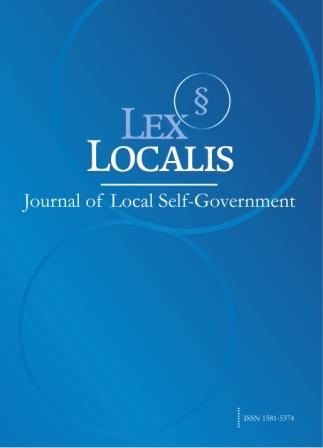Harmonizing Spiritual and Material Symbiosis: The Socio-Psychological Significance of Hotel Accommodation around Religious Sites and Its Public Policy Implications
DOI:
https://doi.org/10.52152/3138Keywords:
social psychology; cognitive-emotional model; perceived image; co-word matrix; semantic networkAbstract
Religious and cultural tourism has a long history and has always been the most charming, mysterious and vital form of tourism, especially after the reform and opening up in China's tourism industry development system plays an important role. Based on social psychology and cognitive-emotional modeling, the article establishes a coding system for the perceived image of hotel accommodations around religious sites from the three dimensions of cognitive image, emotional image and overall perceived image. Purposive sampling was used to collect research data related to hotels around religious places from major tourism apps, and the perceived image of hotel accommodation around religious places was verified by combining the cognitive image and emotional image of religious places with the ROST CM mining system, and with the Baidu index. The structural nature of the elements of the perceived image of hotel accommodation around religious places was also analyzed through the co-word matrix and semantic network, as a way to explore the relevant factors affecting hotel accommodation around religious places. In the statistics of high-frequency words of perceived image, the word frequency of religion reaches 3,483 times, and the overall network density of the social network of hotel accommodation around religious places is 0.847, and the point degree of centrality of “religion” in the network of perceived image is the highest (17.62). Cognitive image and emotional image reflect the material needs and spiritual world of tourists or believers, and the hotels around religious places need to fully satisfy the needs of tourists in order to realize the harmonious symbiosis of spirituality and materialism.
References
Rüpke, J. (2020). Urban religion: A historical approach to urban growth and religious change. Walter de Gruyter GmbH & Co KG.
Radwan, A. H. (2020). The Mosque as a public space in the Islamic City-An Analytical study of Architectural & Urban design of contemporary examples. Journal of Architecture, Arts and Humanistic Science, 6(30), 18.
Gilbert, D., Dwyer, C., Ahmed, N., Cuch, L., & Hyacinth, N. (2019). The hidden geographies of religious creativity: Place-making and material culture in West London faith communities. cultural geographies, 26(1), 23-41.
Perin, R. (2017). The Many Rooms of this House: Diversity in Toronto's Places of Worship Since 1840. University of Toronto Press.
Day, K. (2017). Urban space and religion in the United States. In Oxford Research Encyclopedia of Religion.
Gopal, D., von der Lippe, M., & Kowarik, I. (2019). Sacred sites, biodiversity and urbanization in an Indian megacity. Urban ecosystems, 22(1), 161-172.
Shinde, K. A. (2017). Planning for urbanization in religious tourism destinations: insights from Shirdi, India. Planning Practice & Research, 32(2), 132-151.
Żywiołek, J., Rosak-Szyrocka, J., & Santos, G. (2023). Pilgrimage movement and pilgrim satisfaction as a customer. International Journal for Quality Research, 17(1).
De Lacy, P., & Shackleton, C. (2017). Aesthetic and spiritual ecosystem services provided by urban sacred sites. Sustainability, 9(9), 1628.
Trouillet, P. Y. (2017). Hindu temples and development of localities in Tamil Nadu (South India). Subaltern Urbanisation in India: An Introduction to the Dynamics of Ordinary Towns, 311-334.
De Wildt, K., Radermacher, M., Krech, V., Löffler, B., & Sonne, W. (2019). Transformations of ‘sacredness in stone’: Religious architecture in urban space in 21st century Germany—New perspectives in the study of religious architecture. Religions, 10(11), 602.
Chiodelli, F., & Moroni, S. (2017). Planning, pluralism and religious diversity: Critically reconsidering the spatial regulation of mosques in Italy starting from a much debated law in the Lombardy region. Cities, 62, 62-70.
Shinde, K. A. (2021). Religious theme parks as tourist attraction systems. Journal of Heritage Tourism, 16(3), 281-299.
Karim, M. H. A., Ahmad, R., & Zainol, N. A. (2017). Differences in hotel attributes: Islamic hotel and Sharia compliant hotel in Malaysia. Journal of Global Business and Social Entrepreneurship (GBSE), 1(2), 157-169.
Shinde, K. (2018). Governance and management of religious tourism in India. International Journal of Religious Tourism and Pilgrimage, 6(1), 7.
Rashid, A. G. (2018). Religious tourism–a review of the literature. Journal of Hospitality and Tourism Insights, 1(2), 150-167.
Kim, B., & Yang, X. (2021). “I’m here for recovery”: The eudaimonic wellness experiences at the Le Monastère des Augustines Wellness hotel. Journal of Travel & Tourism Marketing, 38(8), 802-818.
Jaelani, A. (2017). Halal tourism industry in Indonesia: Potential and prospects. International Review of management and Marketing, 7(3), 25-34.
Olivia Spiegler,Jan O Jonsson & Chloe Bracegirdle. (2024). Religious development from adolescence to early adulthood among Muslim and Christian youth in Germany: A person-oriented approach. Child development.
Ying Sing Liu & Liza Lee. (2024). Effects of Religious Tourism Policies on Religious Development. Review of Religious Research(4),462-485.
Jiangmin Ding & Eon Seong Lee. (2024). Promoting Consumers' Sustainable Consumption of Online Retail Cold Chain Logistics Services: Extended Applications of SOR and Cognitive-Affective-Conative Theories. Behavioral sciences (Basel, Switzerland)(9),771-771.
Downloads
Published
Issue
Section
License
Copyright (c) 2025 Lex localis - Journal of Local Self-Government

This work is licensed under a Creative Commons Attribution-NonCommercial-NoDerivatives 4.0 International License.








